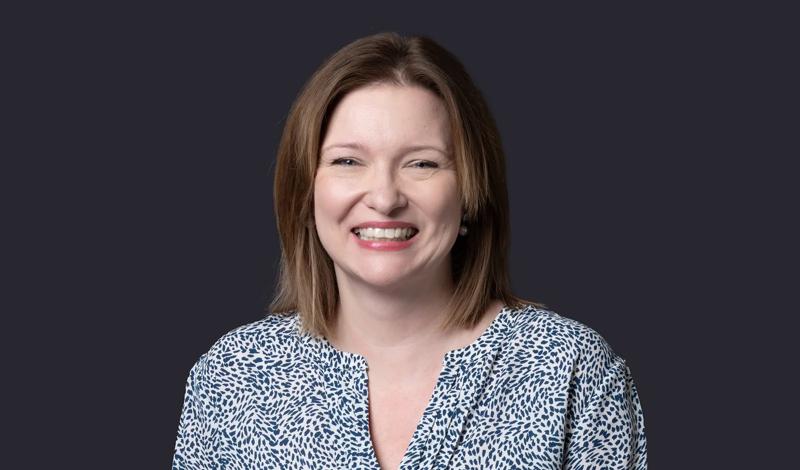Shared Insights: Mental Health Units (Use of Force) Act: What does it mean for hospitals in the mental health and acute sector?
Download full note
Mental Health Units (Use of Force) Act 2018
Mark Barnett, Partner, Browne Jacobson
The aim of the Act and its statutory guidance
- To clearly set out the measures that are needed to both prevent the inappropriate use of force; and
- To ensure accountability and transparency about the use of force in mental health units.
Statutory Guidance and Commencement Date
Government consultation ran from 25 May 2021 to 17 August 2021 and the response to consultation, together with the statutory guidance were published on 7 December 2021.
The provisions of the Act come into force on 31 March 2022.
Statutory guidance (linked here) was published on 7 December 2021 by the Department of Health and Social Care - to prevent the inappropriate use of force and ensure transparency and accountability about the use of force in mental health units.
What does it do?
- The Act extends to physical, mechanical or chemical restraint and so includes the use of sedating medication. The Act applies to all patients being assessed or treated for a mental health disorder in a mental health unit. This applies equally to both NHS and independent hospitals.
- The requirements of the Act which will come into force from 31 March 2022 include:
- Mental health service providers operating a mental health unit need to appoint a ‘responsible person’ who will be accountable for ensuring the requirements in the Act are carried out
- The responsible person for each mental health unit must publish a policy regarding the use of force by staff who work in that unit setting out the steps the unit is taking to reduce (and minimise) the use of force by staff who work in the unit
Who does the Act apply to?
- Applies to all patients. "Patient" means a person who is in a mental health unit for the purpose of treatment for mental disorder or assessment.
- Applies equally to both NHS and independent hospitals providing NHS-funded care.
- The statutory guidance clarifies that:
- For independent hospitals, the Act applies to all patients in their care not just those who are receiving treatment through NHS funded services.
- The Act applies to informal or voluntary patients under the MHA 1983, as well as those detained.
- A patient can be any age (unless separately defined)
Where does the Act apply?
“Mental health unit” means:
- a health service hospital, or part of a health service hospital, in England, the purpose of which is to provide treatment to in-patients for mental disorder, or
- an independent hospital, or part of an independent hospital, in England —
- the purpose of which is to provide treatment to in-patients for mental disorder, and
- where at least some of that treatment is provided, or is intended to be provided, for the purposes of the NHS
What is considered a mental health unit?
Examples from the guidance of what are considered ‘mental health units’ include:
- Acute mental health wards for adults and PICUs.
- Long stay or rehabilitation wards for adults.
- Forensic inpatient or secure wards (low, medium and high).
- Child and adolescent mental health wards.
- Wards for older people with mental health problems.
- Wards for people with autism, or a learning disability Acute hospital wards where patients are detained under the MHA 1983 for assessment and treatment of their mental disorder.
What is NOT considered a mental health unit?
Examples from the guidance of what are NOT considered ‘mental health units’ include:
- Accident and emergency departments or emergency departments.
- Section 135 and 136 suites that are outside of a mental health unit.
- Outpatient departments or clinics.
- Mental health transport vehicles.
Note: both lists are illustrative and non-exhaustive. Must consider the statutory definition.
Key Requirements:
- Mental health units to appoint a ‘responsible person’ accountable for ensuring the requirements of the Act are carried out. Responsible Person must:
- Ensure there is a written policy regarding the use of force by staff who work in that unit.
- Publish information for patients about their rights in relation to the use of force by staff at unit.
- Ensure staff receive appropriate training in the use of force.
- Keep records of any use of force on a patient by staff who work in that unit, which includes demographic data across the protected characteristics in the Equality Act 2010.
- Statistics will be published by the Secretary of State for Health & Social Care.
- Annual review by the Secretary of State for Health and Social Care of Coroner’s PFD reports relating to deaths involving use of force.
Who should be the ‘responsible person’?
- Does not have to be a new or separate appointment.
- Must be a permanent member of staff within the organisation, be someone who is at board level and someone who is appropriately skilled and experienced (ideally with a clinical background).
- If the organisation’s services are mainly for children or young people, the responsible person should have knowledge, skills and experience of working with such people.
- If the organisation operates more than one mental health unit, the same person must be appointed as the responsible person for all of them.
- Some functions can be delegated to more than one person – still within same organisation and of appropriate level of seniority with relevant skills and experience to undertake the responsibility of the task delegated to them.
- Can delegate some functions to a Deputy – who does not necessarily need to be a member of the organisation or Trust Board but must have relevant skills and experience.
‘Negligible’ Use of Force
- Negligible use of force is excluded from the duty to record. However it must still be noted proportionately in the patient’s care plan.
- “The use of force can only be considered negligible where it involves light or gentle and proportionate pressure”.
- “If a member of staff’s contact or touch with a patient goes beyond the minimum necessary in order to carry out daily therapeutic or caring activities then it is not a negligible use of force and must be recorded. Whenever a member of staff makes a patient do something against their will, the use of force must always be recorded”
- To be considered ‘negligible’ the guidance states that the force must:
- be the minimum necessary to carry out therapeutic or caring activities;
- form part of the patient’s care plan;
- consented to by the patient (if capacitous) or agreed at a best interests meeting; and
- fall outside of the circumstances where force can never be negligible.
Practical steps to consider:
- Who in your organisation would be the appropriate ‘responsible person’ under the Act, and familiarise them with what will be required of them under the Act;
- Review your existing use of force/control & restraint policy to ensure it reflects the provisions of the Act;
- Review the content of your existing training materials and sessions or workshops for staff around the use of force and check that they cover the areas listed in the Act;
- Check the systems currently in place for recording information about all uses of force by staff to ensure these are sufficiently robust to fulfil the data collection/statistical reporting requirements in the Act.
- How will restraint be managed whilst the provisions of the Act are being implemented?
- Consider partnership with mental health Trusts to share learning and best practice.
What information is to be recorded?
The record of the use of force must include the:
- reason force was used, including what ‘type’ of force and a description of how;
- place, date and duration for which force was used;
- outcome of the use of force (particularly whether the patient died or suffered serious injury);
- name of the patient and their ‘relevant characteristics’ (such as age, race, sex, religion etc);
- patient’s mental disorder (if known), including if they had any learning disability or ASD; and
- efforts made to avoid the need to use force (if any).
How is information to be recorded?
No prescribed format – but systems must be in place for staff to record the required information and/or report it to the responsible person (or their delegates).
- Data from the record is to be reported via NHS Digital. The guidance states:
It is already mandatory… to submit data on the use of force to the NHS Digital Mental Health Services Data Set. Through the implementation of the Act we can expect to see an increase in compliance in relation to the submission of data, and the number of organisations or trusts submitting data in order to meet their obligations under the Act.
- The record must be kept for three years from the date it was made.
Monitoring Compliance
Role of the regulator:
The Care Quality Commission are to have regard to the statutory guidance when carrying out its regulatory functions. If the CQC consider the statutory guidance is not being followed, they can take appropriate action.
Role of commissioners:
NHS England and NHS Improvement commissioners need to assure themselves that those whom they commission to provide services have the necessary knowledge, skills and competencies to support all patient groups, and have arrangements in place to reduce risk and minimise disproportionate use of force.
When it may be lawful to depart from statutory guidance & short term powers of restraint under common law/miscellaneous powers
Rebecca Fitzpatrick, Partner, Browne Jacobson
Munjaz v Mersey Care NHS Trust [2003] EWCA (applies to children & adults)
Whilst the MHA Code of Practice sets out guidance as to best practice, on occasion it may be appropriate to depart from the Code where there are good reasons to do so.
The court ruled that a Code of Practice was statutory guidance that must be followed unless there are ‘cogent reasons’ for departure and it was up to the departing professional or organisation to justify their actions, case by case.
This case concerned the seclusion policy of a High Secure Hospital and it was accepted by the Court that due to the very specific nature of the patients the Hospital had to manage and the risks involved, it was appropriate in the circumstances for them to have a seclusion policy which departed in some instances from the procedure/guidance set out in the then Code of Practice.
Lord Justice Bingham in the judgment said:
“It is in my view plain that the Code does not have the binding effect which a statutory provision or a statutory instrument would have. It is what it purports to be, guidance and not instruction. But the matters relied on by Mr Munjaz show that the guidance should be given great weight. It is not instruction, but it is much more than mere advice which an addressee is free to follow or not as it chooses. It is guidance which any hospital should consider with great care, and from which it should depart only if it has cogent reasons for doing so.”
In the judgment the court also confirmed:
“there is a general [common law] power to take such steps as are reasonably necessary and proportionate to protect others from the imminent risk of significant harm. This applies whether or not the patient lacks capacity to make decisions himself”
NHS Standard Contract - Service Conditions and General Conditions
SC1 – this requires the Trust to comply with not only the Service Specifications in the Particulars (as mentioned above, this is an example of how the contents of the Particulars will be important), but also “Law” and “Good Practice”
“Law” includes not just the obvious categories of statutes, regulations etc but also “Guidance” and any “applicable codes”.
“Guidance” is defined to mean:
“any applicable health or social care guidance, guidelines, direction or determination, framework, code of practice, standard or requirement to which the Commissioners and/or the Provider have a duty to have regard (and whether specifically mentioned in this Contract or not), to the extent that the same are published and publicly available or the existence or contents of them have been notified to the Provider by the Co-ordinating Commissioner and/or any relevant Regulatory or Supervisory Body.”
“Good Practice” is defined to mean:
“using standards, practices, methods and procedures conforming to the Law and reflecting up-to-date published evidence and using that degree of skill and care, diligence, prudence and foresight which would reasonably and ordinarily be expected from a skilled, efficient and experienced clinical services provider and a person providing services the same as or similar to the Services at the time the Services are provided, including (where appropriate) assigning a Consultant to each Service User who will be clinically responsible for that Service User at all times during the Service User’s care by the Provider.”
Criminal Law Act 1967 (applies to children & adults)
s.3(1) “a person may use such force as is reasonable in the circumstances in the prevention of a crime.”
This provision enables a member of staff to use reasonable force to restrain a patient in self-defence or in the defence of others or to protect property where this is necessary and proportionate in the circumstances.
R v CC of Gloucestershire Constabulary [2006] UKHL (applies to children & adults)
This case confirmed a common law power exists enabling citizens to prevent a breach of the peace;
“every constable and citizen enjoys the power and is subject to the duty to seek to prevent, by arrest or other action short of arrest, any breach of the peace occurring in his presence, or any breach of the peace which (having occurred) is likely to be renewed, or any breach of the peace which is about to occur”
A breach of the peace can occur in a public or private place. Breach of the peace is not a criminal offence.
Black v Forsey [1988] SLT 57 (HL Scottish case) (applies to children & adults)
In the judgment the court confirmed:
- Common law power of a private individual to detain in a situation of necessity, a person of unsound mind who is a danger to himself or others
- Need to be able to show presence of mental disorder & necessity of detention
- Power confined to: “imposing temporary restraint on a lunatic who has run amok and is a manifest danger to himself or others – a state of affairs as obvious to a layman as to a doctor…confined to the short period necessary before the lunatic can be handed over to a proper authority”
R v Bournewood NHS Trust Ex parte L (1998) HL
Confirmed common law limited power to detain:
“The common Law permits the detention of those who were a danger or potential to themselves or others, in so far as this was shown to be necessary”
Limits to doctrine of necessity
- Combination of powers provide authority for a healthcare professional or member of the public to act swiftly to prevent a patient from causing harm to themselves, others or property as long as the force used is necessary and proportionate to the harm threatened.
- These common law powers should not normally be used as an alternative to the MHA if that is the appropriate framework.
- Can be used for a short period where the persons with the appropriate MHA powers are not immediately available.
MS v UK (2012)
In 2004 a man who had been detained in police custody as a place of safety under s136 MHA was subject to an inordinate delay in being admitted to hospital after being assessed under the Mental Health Act. During that time, his personal welfare, his psychiatric condition and physical condition deteriorated to such a degree that he was naked in a cell – having soiled his clothing and used it to try to self-harm – and he wasn’t eating or drinking. The failing to expedite his admission to hospital when he was detained in police custody and in ‘dire need of psychiatric care’ was ruled to be a violation of Article 3 of the European Convention.
Sessay v South London and Maudsley & the Met Commissioner (2010)
Officers attending a mental health emergency in the claimant’s private premises were wrong to rely upon the Mental Capacity Act 2005 to defend their actions, when they removed her from her home and took her to the local Mental Health Act place of safety for assessment. In this judgment, the court reminded us all that the proper legal process for responding to mental health emergencies in someone’s home where there are no criminal offences or urgent, life-threatening risks, is to solicit the support of an AMHP and a doctor and request consideration of an urgent assessment under s4 MHA.
ZH v the Met Commissioner (2012)
In this case a 16 year old boy with severe autism was on a school trip to the local swimming pool in Ealing, London and as they group made to leave, went and stood by the side of the pool, staring at the water. This was not unusual behaviour for him, as he often fixated at water and usually did so for 15-20 minutes before moving away. The pool manager was not happy at his actions and called the police, asking for him to be moved. Without taking advice or guidance from staff present, officers approached him and when they touched him on his back, to encourage him away from the water, he jumped in.
Lifeguards were there as a contingency and formed something of a cordon to move him towards the shallow end and officers pulled him from the water, restrained and handcuffed him before placing him in a police van, still wet. After a short while, they completely released him and he left the swimming pool with school staff. His family brought proceedings against the Metropolitan Police Commissioner for assault, battery and violation of human rights laws and were successful, including when the Commissioner appealed against the initial verdict. The court emphasised that officers were wrong to rely upon the Mental Capacity Act 2005 in justifying their actions.
Children
S.3(5) of the Children Act 1989 staff may do “what is reasonable in all the circumstances of the case for the purposes of safeguarding or promoting the child’s welfare”.
Mental Health Act Code of Practice
- 26.59 “Restrictive interventions should be used with great caution on children who are not detained under the Act….if there are indications that the use of restrictive interventions (particularly physical restraint or seclusion) might become necessary, consideration should be given to whether formal detention under the Act is appropriate. A person with PR can consent to the use of restrictive interventions where a child lacks capacity to consent, but only if the decision falls within “the scope of parental responsibility”.
- 26.61 “Staff should be aware that under section 3(5) of the Children Act 1989 they may do “what is reasonable in all the circumstances of the case for the purposes of safeguarding or promoting the child’s welfare”. Whether an intervention is reasonable or not will depend, among other things, upon the urgency and gravity of what is required. This might allow action to be taken to prevent the child from harming himself, however it would not allow restrictive interventions that are not proportionate and would not authorise actions that amounted to a deprivation of liberty”.
Human Rights Act (applies to children & adults)
- Article 5 ECHR the right not to be deprived of your liberty other than in accordance with a procedure prescribed by law and subject to a speedy review.
- Article 8 ECHR the right to a private and family life.
- Article 3 ECHR the right not to be subject to inhuman or degrading treatment.
- Article 2 ECHR the right to life; where an individual is in the care of the state and there is imminent risk to life, the state is required to take steps to protect life.
Summary
- There may be occasions where there is a cogent reason not to comply with relevant statutory guidance. In such cases it is essential these reasons are recorded – it is up to the departing professional or organisation to justify their actions, case by case.
- In a situation where for example staff trained in restraint are not immediately available and P is putting themselves or others at imminent risk, proportionate restraint for a limited time to protect P or others from harm may be appropriate under the MHA, common law or other miscellaneous powers available. Article 2 and 3 ECHR, the assessed risk, and what is proportionate in the circumstances will be particularly relevant. The record keeping requirements of the new Act would need to be followed where that patient is detained under the MHA at an acute Trust.
- Case law has made it clear that unless there is imminent risk to life or of a criminal offence being committed, the normal MHA framework and processes should be followed.
A Trust’s perspective on implementing the Guidance
Richard Idle, Named Nurse for Adult Safeguarding, Sherwood Forest Hospitals NHS Foundation Trust (SFH)
Richard is the Named Nurse for Adult Safeguarding at SFH, and was previously a mental health nurse specialist at the Trust. He set out the practical steps his Trust has taken to implement the Guidance.
- Since becoming aware of this new legislation and the inclusion of acute Trusts, Sherwood Forest Hospitals have been working hard to consider the implications and the practical steps required.
- Sherwood Forest is a district general hospital sized Trust and, to put it into context, this year the Trust has detained just under 30 patients.
- The practical element of taking the requirements into evidential processes will be a challenge.
- The first point the Trust considered was who to appoint as responsible person. They opted for the Chief Nurse, who already holds the restrictive practice brief. The Trust has tried to ensure that there is going to be a process in place so any outcomes go through the safeguarding group for appropriate oversight.
- The Trust works closely with the local Mental Health Trust and has strategic and operational meetings with them. E.g. working with them on patient information leaflets to ensure consistency or differentiation as appropriate.
- A broad action plan has been developed to cover training, patient information, data gathering and policy. The Trust already has a restrictive policy in place – it is about ensuring that the statutory guidance is reflected in that policy.
- Training is an issue. The Trust has an external provider delivering training. Not all staff are trained in restraint, but the Trust recognises the need to train a significant number under the new legislation. Identification of key wards where restraint is more likely to be required should help with identifying where training is required.
- Some of the headline work has been done and the Trust can show that the early work has been carried out and systems are being developed.
During the discussion that followed we covered a number of issues.
Training
- Staff competency and confidence is a significant challenge.
- In terms of where to focus restraint training, in acute hospitals there is no need to train all staff as it would be disproportionate. The guidance specifically talks about wards where patients are detained under MHA so that would be where to start. Trusts could have discussions with local mental health providers about getting some input from them.
- If the physical restraint training meets the Restraint Reduction Network Standards then it will meet the requirements for the Act.
- One Trust mentioned that they had considered having a restraint team (similar to the resus team) that can be bleeped if restraint is required. Another Trust confirmed they use Security for restraint. Another Trust explained they have a contracted security team who support, but they have completed lots of work to get the security and clinical teams working together.
Recording
Recording of restraint and use of force and the specific requirements of the Act is good practice even in areas where it does not apply (e.g. ED). The purpose of the Act is to ensure accountability and transparency around the use of force. There is an argument that this is something we should just be doing anyway.
Does this include children’s services?
Yes
Are health based places of safety (S136/S135) which are located on site as part of a mental health hospital included?
They are not specifically included in the exclusion so we should assume they included.
Indemnities for external staff providing restraint
Generally this tends to be caught under NHS Resolution provisions.
What does this mean for the providers where patients on section 17 leave
- To acute Trusts - Where responsibility for recording restraint lies depends on why the patient is being treated at the acute Trust. E.g. if treatment is for a heart attack the guidance arguably wouldn’t apply but if they are there to receive treatment of a mental disorder (e.g. MG feeding for eating disorder) and MHA powers being relied on to treat it would. Make sure that whatever force is being used is being recorded by one or the other and make clear between the two bodies who is responsible for doing what. It is good practice to record in any event.
- To residential/nursing placements - Guidance applies to hospitals rather than care/nursing homes – they would be caught however where registered to accept MHA detained patients.
How does it apply in community settings, for example where patients conditionally discharged and deprived of liberty in supported living
The Act only applies in Mental Health Units (as defined) and so won’t apply in care homes or supported living unless MHA registered.
Does it apply to hospitals not registered to take patients with a mental disorder? For example community hospitals that are not able to take detained patients.
Unlikely - the Act applies to “patients”, which is defined as a person who is in a mental health unit for the purpose of treatment for mental disorder or assessment. Ask yourself whether the patient falls into that definition as well as the definition of “mental health unit”, which is a health service hospital (or part of a health service hospital), the purpose of which is to provide treatment to in-patients for mental disorder.
What about people who have physical support needs as well as mental health and may require e.g. hoisting which they are resisting / can't consent to - is this excluded?
As above, it will only apply where the person falls into the definition of “patient”, i.e. a person who is in a mental health unit for the purpose of treatment for mental disorder or assessment.
The definitions of restraint though suggest that there is an element of control – physical restraint means the use of physical contact which is intended to prevent, restrict or subdue movement of any part of the patient's body and mechanical restraint means the use of a device which is intended to prevent, restrict or subdue movement and the primary purpose is for behavioural control – which hoisting is unlikely to fit into.
How are you covered under the Act if employing RMNs from an external agency to provide restraint as some staff aren't trained but the Trust cannot always secure locum RMNS staff and therefore can't provide the treatment. Does this raise issues for whether the Trust should be detaining patients?
The Act and its requirements will still apply even if locum / agency staff are employed – the Responsible Person needs to ensure there is an appropriate policy in place and that staff are appropriately trained.
Where the guidance is departed from, staff need to record the reasons for this, equally if the organisation policy on restraint deviates from the guidance “cogent reasons” will need to be provided to explain why this is.
What does the guidance say about engagement with patients, carers, advocates etc?
Most references to family or advocates in the statutory guidance are around information sharing and ensuring patients are supported to make their own decision, which could include from their family, advocate or carer.
How does it work where the elements of restraint for the patient being detained under the authority of the MH Trust are being applied by the general hospital staff?
The Act can still apply in the acute hospital environment – it does not matter who is applying the restraint.
Download guidanceSpeakers

Mark Barnett
Partner

Rebecca Fitzpatrick
Partner
Shared Insights
Our monthly forum connecting health and care leaders and professionals to discuss challenges and share solutions.
Contact

Mark Hickson
Head of Business Development
onlineteaminbox@brownejacobson.com
+44 (0)370 270 6000

Nicola Evans
Partner
Nicola.Evans@brownejacobson.com
+44 (0)330 045 2962







































